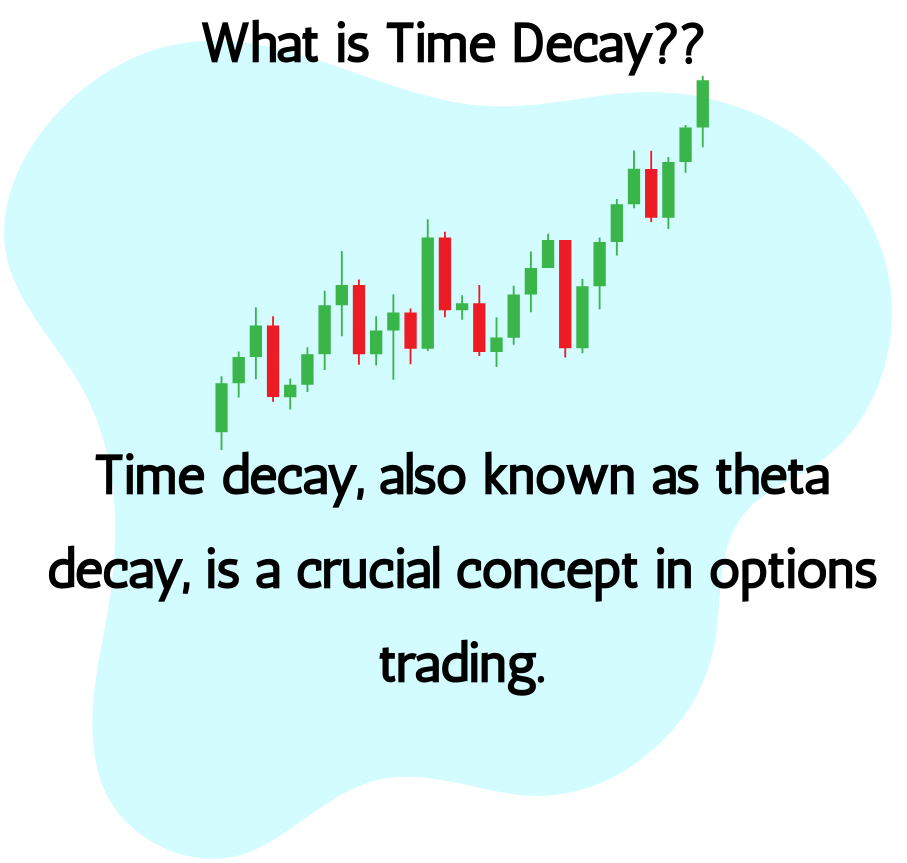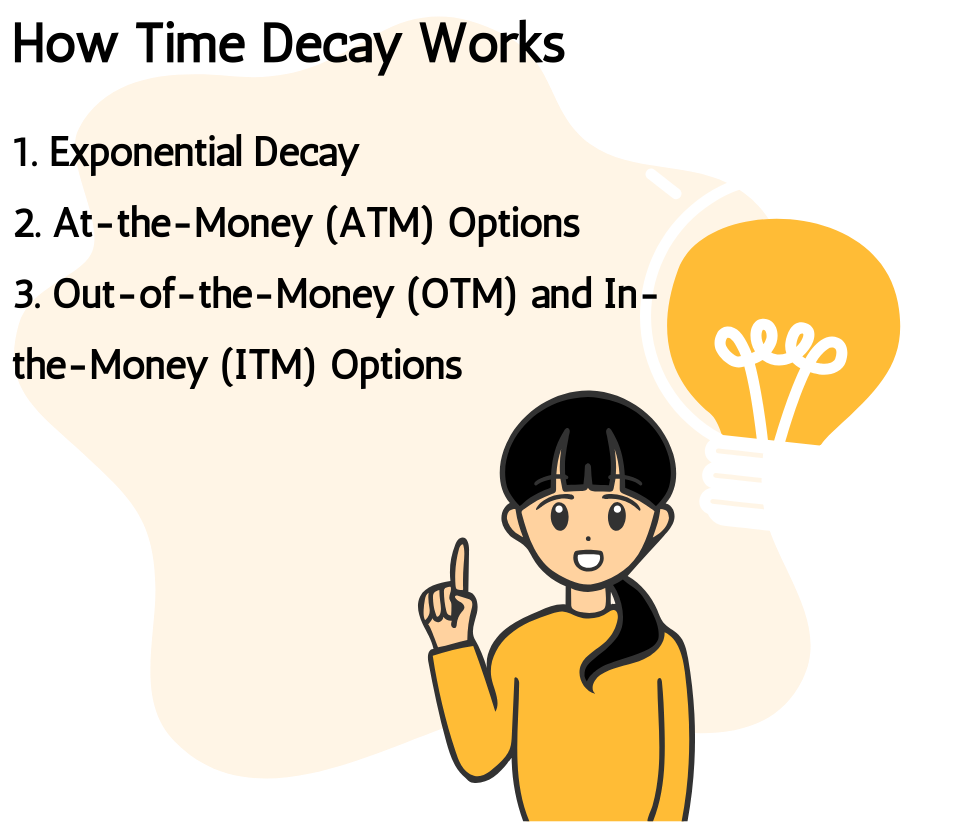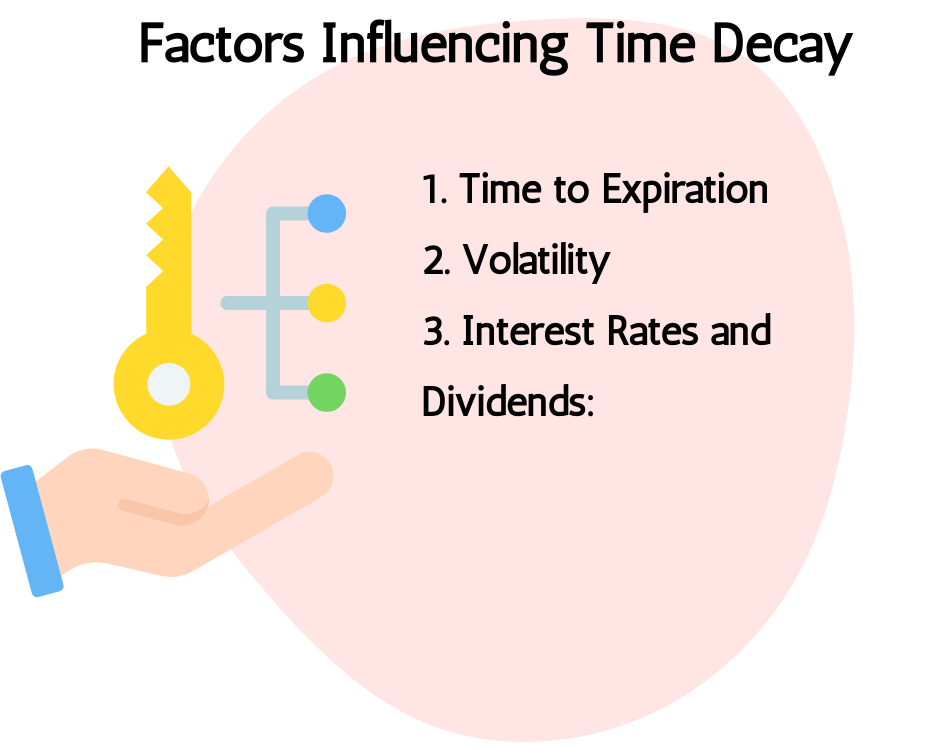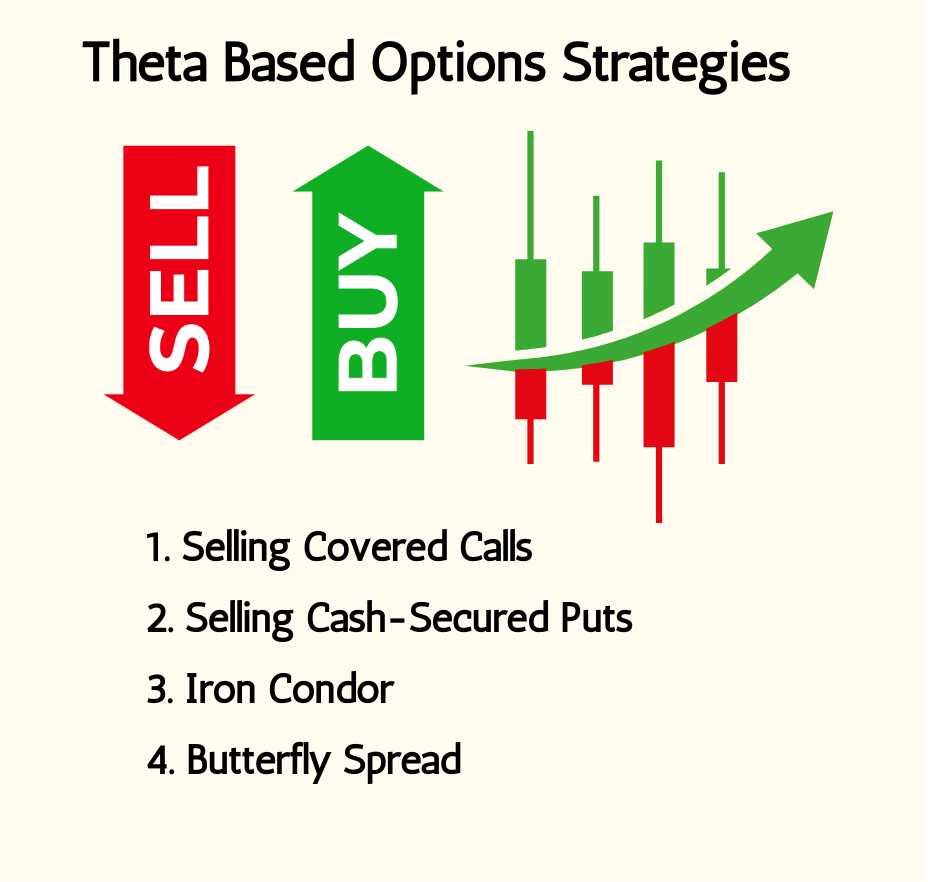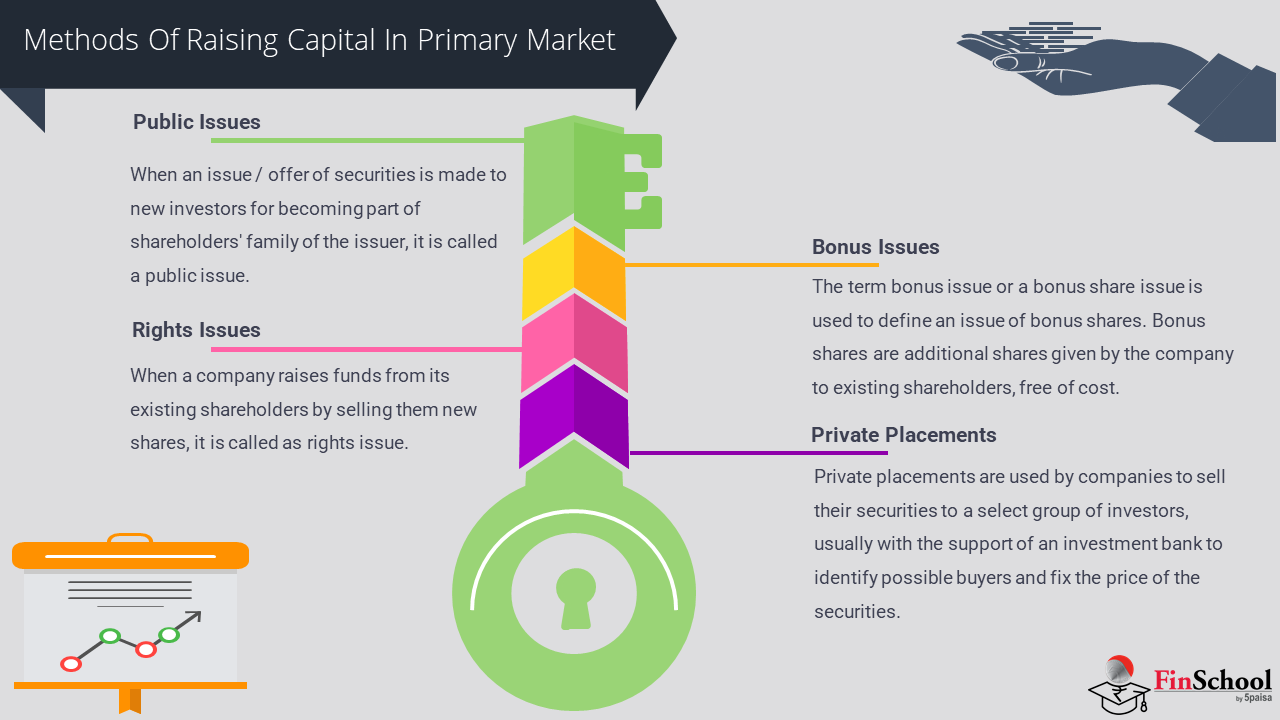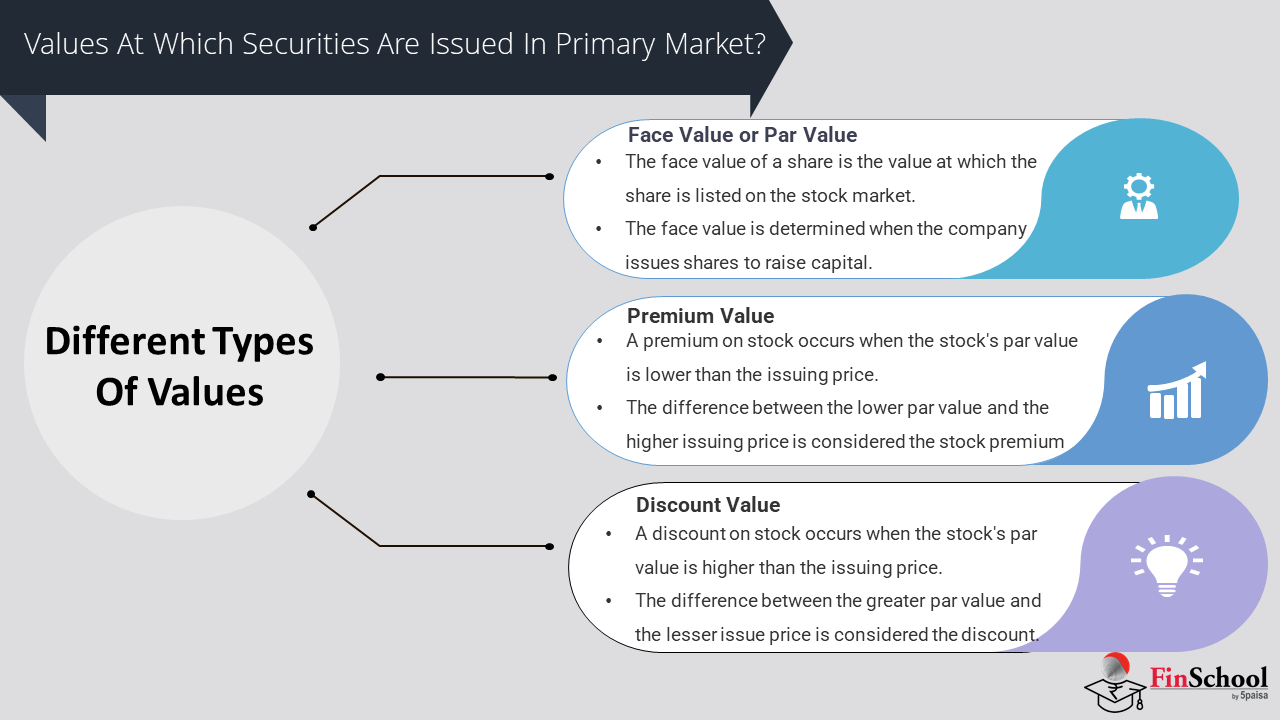- Study
- Slides
- Videos
5.1 Key Concepts of Time Decay
Time decay, also known as theta decay, is a crucial concept in options trading. It refers to the reduction in the value of an options contract as it approaches its expiration date. Here’s a detailed explanation:
- Intrinsic Value and Extrinsic Value:
- Intrinsic Value: The inherent value of an option if it were exercised today. For a call option, it’s the difference between the current price of the underlying asset and the strike price, if this difference is positive. For a put option, it’s the difference between the strike price and the current price of the underlying asset, if this difference is positive.
- Extrinsic Value (Time Value): The portion of the option’s price that exceeds its intrinsic value. It accounts for the possibility that the option will gain intrinsic value before expiration. Time decay affects this extrinsic value.
2. Theta (Θ):
- Theta: A measure of the rate at which an option’s price decreases as time passes, assuming other factors (such as the price of the underlying asset and volatility) remain constant. Theta is usually expressed as a negative number, indicating the loss in value over a specified period, typically one day.
5.2 Characteristics of Time Decay
Time decay, also known as theta decay, is a crucial concept in options trading and understanding its characteristics can help traders manage their options positions more effectively. Here are the key characteristics of time decay:
1. Impact on Option Premiums
- Option Premium Erosion: Time decay refers to the reduction in the value of an options contract as it approaches its expiration date. This erosion affects the extrinsic value of the option.
- Effect on Calls and Puts: Both call and put options experience time decay, although the rate and impact can differ based on several factors.
2. Non-linear Decay
- Accelerating Decay: Time decay is not linear. It accelerates as the expiration date nears, meaning that the rate of decay is faster in the last few weeks or days before expiration compared to when there is more time left.
- Exponential Nature: The decay can be visualized as exponential, with a sharper drop-off closer to expiration.
3. Dependency on Money ness
- At-the-Money (ATM) Options: Time decay is most pronounced for ATM options because they have the highest extrinsic value.
- In-the-Money (ITM) and Out-of-the-Money (OTM) Options: ITM and OTM options have lower extrinsic value and thus experience slower time decay compared to ATM options.
4. Impact of Volatility
- Higher Volatility: Options with higher implied volatility tend to have higher extrinsic value, which can mitigate the effects of time decay to some extent.
- Lower Volatility: Lower volatility can lead to quicker time decay as the extrinsic value is less pronounced.
5. Market Conditions and Interest Rates
- Stable Markets: In stable markets with low volatility, time decay can be more predictable.
- Changing Conditions: Changes in market conditions, including shifts in interest rates, can impact the rate of time decay.
6. Strategies to Manage Time Decay
- Selling Options: Traders can sell options to benefit from time decay, collecting the premium as the option loses value.
- Spreads: Implementing spread strategies, such as calendar spreads, can help traders manage and potentially profit from time decay.
7. Psychological and Emotional Impact
- Psychological Pressure: Time decay can create pressure on option holders, particularly as the expiration date nears and the option’s value erodes faster.
- Strategic Planning: Effective management of options positions requires strategic planning to account for time decay, including decisions on when to exit or adjust positions.
5.3 How Time Decay Works
- Exponential Decay:
- Accelerated Decay: Time decay is not linear. It accelerates as the option approaches its expiration date. This means that an option will lose value more rapidly in the last few weeks of its life than it does when it has several months remaining.
- At-the-Money (ATM) Options:
- Highest Time Decay: Options that are at-the-money experience the most significant impact from time decay because their entire value is extrinsic. Since they are closest to having intrinsic value, they have the highest potential for value fluctuation.
3. Out-of-the-Money (OTM) and In-the-Money (ITM) Options:
- Lower Time Decay: Out-of-the-money options (with no intrinsic value) and deep in-the-money options (with substantial intrinsic value) are less affected by time decay compared to at-the-money options. However, OTM options are highly speculative and may lose value quickly as expiration nears if they remain out-of-the-money.
5.4 Practical Implications
- For Option Buyers:
- Erosion of Value: Buyers of options need to be aware that the value of their options will decline over time due to theta decay, regardless of movements in the underlying asset. This is a critical consideration for those holding options over long periods.
2. For Option Sellers:
- Profit from Time Decay: Sellers of options benefit from time decay. As the expiration date approaches, the likelihood of the option being exercised diminishes, allowing the seller to keep the premium received from selling the option.
5.5 Example of Time Decay
Suppose you purchase an at-the-money call option for a stock priced at Rs 100 with a strike price of Rs 100. The option costs Rs 5, which is entirely extrinsic value since the option is at-the-money.
- One Month before Expiration: The option might lose a small amount of value each day, say Rs 0.10 per day (theta = -0.10).
- One Week before Expiration: The rate of decay accelerates. The option might now lose Rs 0.25 per day.
- Day before Expiration: The option’s time decay is at its peak, losing perhaps Rs 0.50 per day or more.
If the stock price remains at Rs 100, the option’s value will continually decline due to time decay until it potentially expires worthless.
5.6 Factors Influencing Time Decay
- Time to Expiration: Shorter-term options experience more rapid time decay than longer-term options.
- Volatility: Higher volatility can increase the extrinsic value of an option, mitigating the effects of time decay to some extent.
- Interest Rates and Dividends: These can also influence the rate of time decay, though their impact is generally less significant than time and volatility.
5.7 Theta Based Options Strategies
Theta-based options strategies focus on taking advantage of time decay, which is the reduction in the value of options as they approach expiration. Here are several strategies that are primarily driven by theta decay:
1. Selling Covered Calls
- Strategy: Selling (writing) call options while holding the equivalent amount of the underlying asset.
- Objective: Generate income from the premiums received for selling the call options, benefiting from time decay.
How It Works:
- You own 100 shares of a stock.
- You sell one call option contract (representing 100 shares) against these shares.
- If the stock price remains below the strike price, the option expires worthless, and you keep the premium.
- If the stock price rises above the strike price, you must sell the shares at the strike price, but you still keep the premium.
Risks:
- Limited profit potential if the stock price surges, potential loss if the stock price falls significantly.
2. Selling Cash-Secured Puts
- Strategy: Selling put options while holding enough cash to buy the underlying asset if the option is exercised.
- Objective: Generate income from the premiums received and potentially buy the stock at a lower price.
How It Works:
- You sell a put option on a stock.
- You set aside enough cash to buy the stock at the strike price if the option is exercised.
- If the stock price remains above the strike price, the option expires worthless, and you keep the premium.
- If the stock price falls below the strike price, you buy the stock at the strike price, potentially at a discount.
Risks: Potential loss if the stock price falls significantly below the strike price.
3. Iron Condor
Strategy: Selling an out-of-the-money call spread and an out-of-the-money put spread on the same underlying Asset with the same expiration date.
Objective: Profit from low volatility and time decay.
How It Works:
- You sell an out-of-the-money call and buy a further out-of-the-money call.
- You sell an out-of-the-money put and buy a further out-of-the-money put.
- The goal is for the underlying asset to remain within the range of the sold options, so all options expire worthless.
Risks: Limited profit potential, significant loss if the underlying asset moves significantly outside the range of the sold options.
4. Butterfly Spread
Strategy: A combination of buying and selling call or put options at different strike prices, forming a “butterfly” shape.
Objective: Benefit from low volatility and time decay.
How It Works:
- Buy one in-the-money option.
- Sell two at-the-money options.
- Buy one out-of-the-money option.
- The strategy is typically centered around the at-the-money strike price.
Risks: Limited profit potential, limited loss potential, but the maximum profit occurs if the underlying asset is at the middle strike price at expiration.
5. Calendar Spread (Time Spread)
- Strategy: Selling a short-term option and buying a longer-term option with the same strike price.
- Objective: Profit from time decay on the short-term option while benefiting from potential movements in the underlying asset.
How It Works:
- Sell a near-term option.
- Buy a longer-term option with the same strike price.
- The idea is to benefit from the rapid decay of the near-term option’s premium while the longer-term option retains its value better.
Risks: If the underlying asset moves significantly, both the short-term and long-term options could lose value, leading to a loss.
6. Short Straddle
- Strategy: Selling both a call and a put option at the same strike price and expiration date.
- Objective: Profit from low volatility and time decay.
How It Works:
- Sell an at-the-money call.
- Sell an at-the-money put.
- The strategy profits if the underlying asset remains near the strike price, causing both options to decay rapidly.
Risks: Unlimited loss potential if the underlying asset moves significantly in either direction.
7. Short Strangle
- Strategy: Selling an out-of-the-money call and an out-of-the-money put with the same expiration date.
- Objective: Profit from low volatility and time decay.
How It Works:
- Sell an out-of-the-money call.
- Sell an out-of-the-money put.
- The strategy profits if the underlying asset stays within the range of the sold options.
Risks: Significant loss potential if the underlying asset moves significantly outside the range of the Options.
Key Takeaways
- Time decay is a crucial aspect of options trading that impacts pricing, risk management, strategy selection, and overall trading performance. Traders who understand and effectively manage time decay can enhance their ability to profit from options markets while mitigating potential risks.
- Theta decay strategies leverage the passage of time as a factor that works in the trader’s favour. Instead of solely relying on market direction, traders can profit from the natural decay of option prices as expiration approaches. This aspect of time decay strategies makes them suitable for generating returns in various market conditions, including sideways or slightly trending markets.
- Theta decay strategies can help traders generate income, reduce risk, increase the probability of success, and complement existing positions. By capitalizing on the natural decay of options over time, traders can build robust trading strategies that offer consistent returns in various market conditions.

